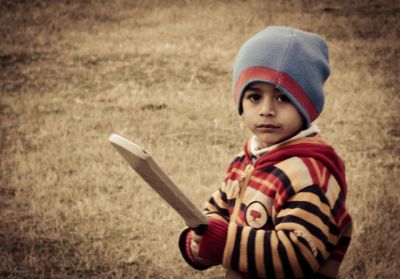A cricket game based on individual success and team work through speed, patience and control.
Materials Needed:
- A large soft plastic ball (or) tennis ball.
- Small cricket bat /old tennis racquet.
What to do:
- One player holds the bat in front of their legs and the other player’s space themselves out in a large circle around that player.
- The object of the game is to try to hit the batsman’s legs with the ball (usually bowled underarm at the legs).
- The batsman stands stationary with the bat protecting their legs, their legs being the "stumps" of formal cricket.
- The batsman’s aim is to prevent the ball from hitting below their knees. They can jump, move or strike the ball to avoid being hit by the ball..
- The player surrounding the batsman throws the ball at the batter one at a time. The batter hits or dodges the ball and as soon as they strike / dodge the ball, the batsman begins to move the bat from hand to hand around their bodies.
- The batsman counts the number of times he is able to move the bat from hand to hand around their bodies. This will be the batsman’s score. (See Hints & Tips for Alternative scoring methods)
- The other players have to try and hit the batsman’s legs with the ball to get them out.
- When the opposing team hit’s the batman’s legs, the batsman is out.
- If the batsman hits the ball, the other participants may also dismiss the batman by a catch.
- The person who gets the batman out takes the next turn.
- The person with the highest score wins in the end.
Hints and Tips:
- Keep score of how many runs each child makes. The team or individual with the highest score wins.
- A great game to play on the beach during the summer.
- Each time the batsman moves the bat around their bodies it is considered 1 run. The player with the most runs wins. (OR)
- The player who batted for the most balls or the longest time is considered the winner.
- Alternative method - The batsman has to try to hit the ball away and is not allowed to move except when the ball has been hit & a player is running to fetch it. The batsman can then jump to another position. However, if the player fetching the ball sees this move, batsman is out.







